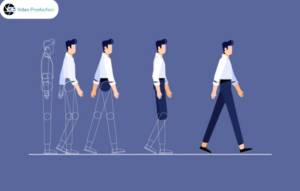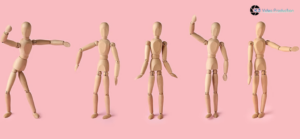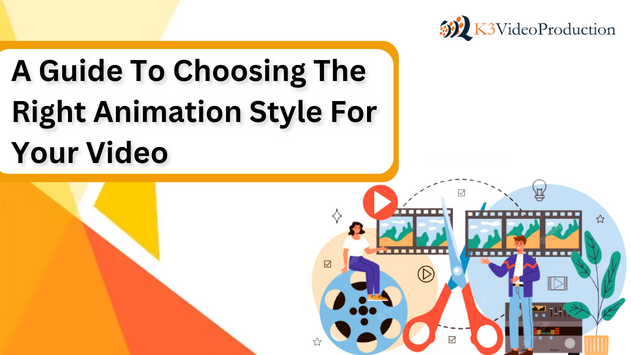A Guide To Choosing The Right Animation Style For Your Video
Table of Contents
ToggleCreating engaging and captivating videos is becoming increasingly important for businesses as video content dominates the digital landscape. One key aspect of creating a successful video is choosing the right style that aligns with your brand and message. You’ll learn about the different styles and how to choose the right one for your video in this blog.
2D Animation
2D animation is a classic style that has been around for decades. It involves creating flat, two-dimensional characters and backgrounds that move and interact within a given space. This animation style is often used for explainer videos, product demos, and educational content.

Pros:
- Cost-effective: Animated video production is less expensive than 3D animation, making it an ideal choice for projects with a limited budget.
- Faster production: 2D animation requires less time than 3D animation, making it a good option for projects with tight deadlines.
- Easy to understand: The simple style of 2D animation makes it easy for the audience to understand the story and message of the video.
- Versatile: 2D animation can be applied to a wide range of projects, including advertisements, explainer videos, and even feature-length films.
Cons:
- Limited depth: 2D animation needs more depth and realism than 3D animation, making it less suitable for certain types of videos.
- Limited movement: 2D animation has limitations regarding character movements and camera angles, which may restrict creative freedom.
- Outdated look: 2D animation has been around for a long time and may need to be updated for some audiences, especially in comparison to newer styles such as 3D and motion graphics.
- Not suitable for complex scenes: There may be better choices than 2D animation for complex scenes that require a high level of detail, such as intricate backgrounds or complicated camera movements.
3D Animation
3D animation involves creating three-dimensional characters and environments that look realistic and can move in any direction. This style is often used for gaming, movies, and product demos.

Pros:
- Realistic: 3D animation can create realistic and detailed scenes and characters, making it ideal for creating immersive and engaging videos.
- Flexible: 3D animation can accommodate a wide range of styles, from realistic to abstract, and can be used for various projects, including films, video games, and advertising.
- Improved technology: Advances in technology have made 3D animation more accessible and easier to produce, allowing for faster turnaround times and lower costs.
- Greater creative control: 3D animation has no limitations on camera angles or movements, allowing for greater creative control and freedom.
Cons:
- Time-consuming: 3D animation requires a significant amount of time to produce, as every detail needs to be created from scratch.
- Expensive: 3D animation is more expensive than 2D animation, as it requires specialized software and hardware to create.
- Steep learning curve: 3D animation can be complex and difficult to learn, requiring significant training and experience.
- Not suitable for all types of projects: There are many types of videos you can make with 3D animation, but some types, such as simple explainer videos or cartoons, are not the best choice.
Whiteboard Animation
Whiteboard animation involves drawing or writing images and text on a whiteboard or similar surface and recording the process in real-time. This style is often used for explainer, educational, and marketing video production.

Pros:
- Engaging: Whiteboard animation is known for its ability to capture and maintain audience attention, making it an effective tool for conveying complex ideas.
- Cost-effective: Whiteboard animation is less expensive than other styles, as it requires fewer resources and less time to produce.
- Easy to understand: Whiteboard animation uses simple visuals and minimalistic animation, making it easy for viewers to understand and follow.
- Versatile: An explainer video, educational content, or marketing video can be created with whiteboard animation.
Cons:
- Limited visuals: Whiteboard animation relies heavily on hand-drawn illustrations, which can limit the variety of visuals that can be used.
- Not suitable for complex visuals: There may be better choices than whiteboard animation for videos that require complex visual effects or realistic 3D animation.
- Limited animation: Whiteboard animation typically uses a limited number of animation techniques, which can make it feel repetitive or predictable over time.
- Not suitable for all types of videos: While whiteboard can be used for a wide range of videos, there may be better choices for certain types of content, such as action-packed videos or music videos.
Stop Motion Animation

Stop motion animation involves taking a series of still photos and piecing them together to create a moving animation. This style is often used for commercials, short films, and music videos.
Pros:
- Unique visuals: Stop motion animation creates a unique look and feel that can set a video apart from other styles.
- Tangible feel: Stop motion animation involves physical objects, which can create a tangible and relatable feel for the audience.
- Handcrafted: Stop motion animation is a labor-intensive process that requires a lot of attention to detail, making it a highly creative and satisfying process for animators.
- Versatile: Stop motion animation can be used for various projects, from short films to commercials to music videos.
Cons:
- Time-consuming: Stop motion animation can be very time-consuming, as each frame must be captured individually.
- Expensive: Stop motion animation requires a lot of resources, including equipment, materials, and studio space, making it an expensive animation style to produce.
- Limited animation: Stop motion animation is limited in terms of the range of motion and actions that physical objects can perform.
- Not suitable for all types of videos: Stop motion animation may not be the best choice for videos that require fast-paced action or smooth, realistic motion.
Motion Graphics Animation
Motion graphics animation combines typography and graphic design elements to create a visually stunning video. This animation style is often used for advertising, social media, and explainer videos.

Pros:
- Versatile: Motion graphics animation is a versatile animation style that can be used for various projects, from explainer videos to commercials to music videos.
- Professional look: The use of motion graphics animation can create a polished look for a video, making it a popular choice for businesses and organizations.
- Easy to edit: Motion graphics animation is relatively easy to edit and update, allowing for changes to be made quickly and efficiently.
- Eye-catching: Motion graphics animation can be visually stunning and attention-grabbing, making it an effective way to capture the audience’s attention.
Cons:
- Limited motion: Motion graphics animation is limited in motion and movement, making it less suitable for videos that require more complex motion.
- Repetitive: Motion graphics animation can become repetitive and predictable if not executed creatively and thoughtfully.
- Generic look: Since motion graphics animation is a popular style, it can sometimes create a generic or overused look if not customized to the specific project or brand.
- Time-consuming: Although easier to edit than some animation styles, motion graphics animation can still be time-consuming to produce, especially if complex graphics or multiple revisions are needed.
How To Choose The Right Animation Style For Your Video
If you want to create a video with animation, here are some tips:
- Determine your audience: Understand your target audience and what animation style would appeal to them. For example, a younger audience may prefer more colorful and playful animations, while a professional audience may prefer more polished and sophisticated animation styles.
- Consider your brand: Your animation style should align with your brand image and values. For example, if you have a fun and playful brand, choosing a colorful and whimsical animation style from the top animated videos company would be more appropriate.
- Identify the message: Consider the message you want to convey and what animation style would best communicate that message. For example, a complex technical message may require a more detailed and explanatory animation style.
- Understand your budget and timeline: Animation styles can vary greatly in cost and time needed for animation video production. Choose an animation style that fits within your budget and timeline.
- Research and compare: Research and compare different animation styles and their pros and cons. Look at examples of each style and consider which would best fit your project.
By considering these tips, you can choose the right animation style for your video that effectively communicates your message to your target audience while staying true to your brand image and values.
Conclusion
Choosing the right animation style & animation video company for your video is crucial to effectively communicating your message and engaging your target audience. By considering your audience, brand, message, budget, and timeline, as well as researching and comparing different animation styles, you can make an informed decision on the animation style that fits your project. Each animation style has pros and cons, so it’s important to weigh them carefully to ensure that you achieve the desired outcome for your video.








